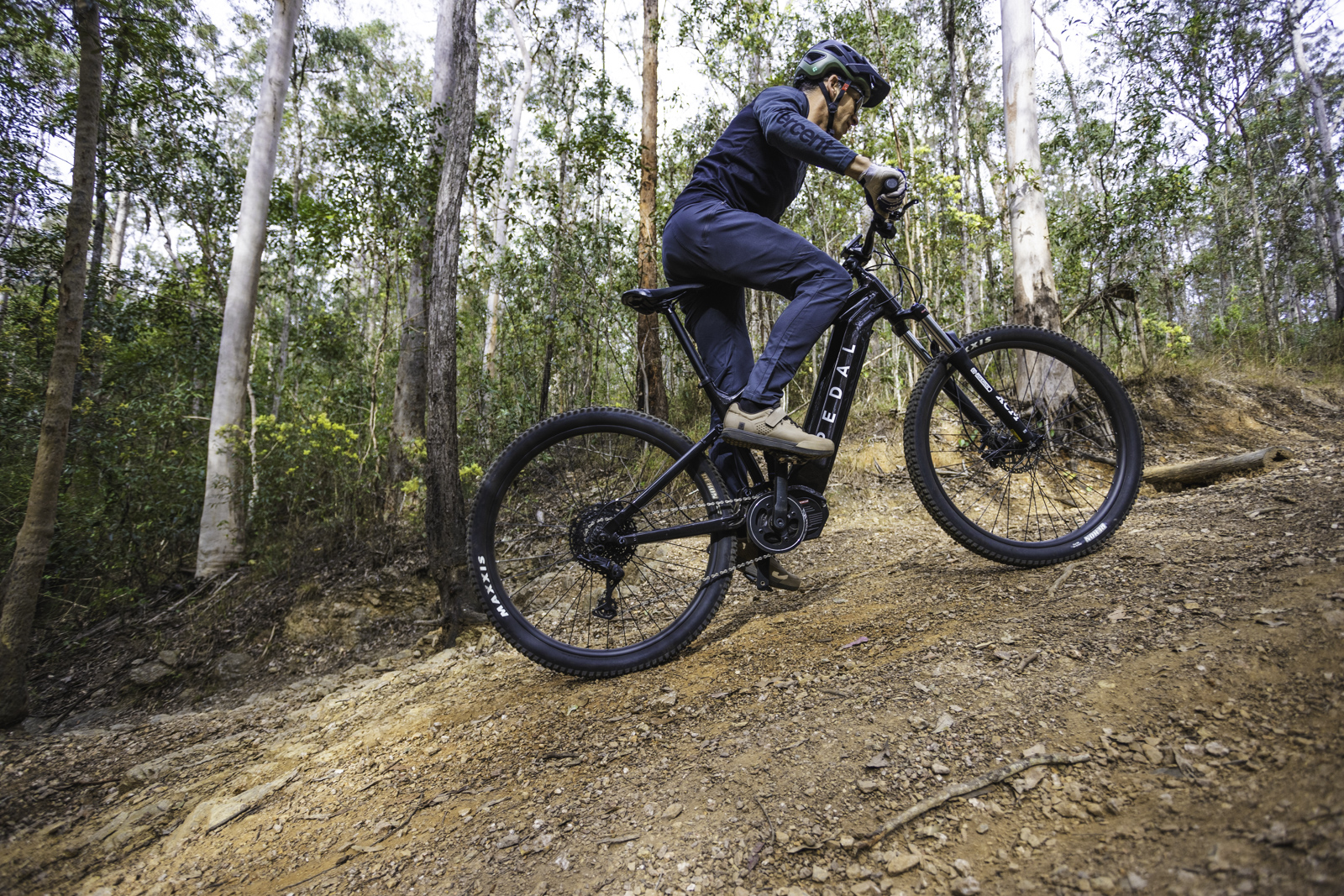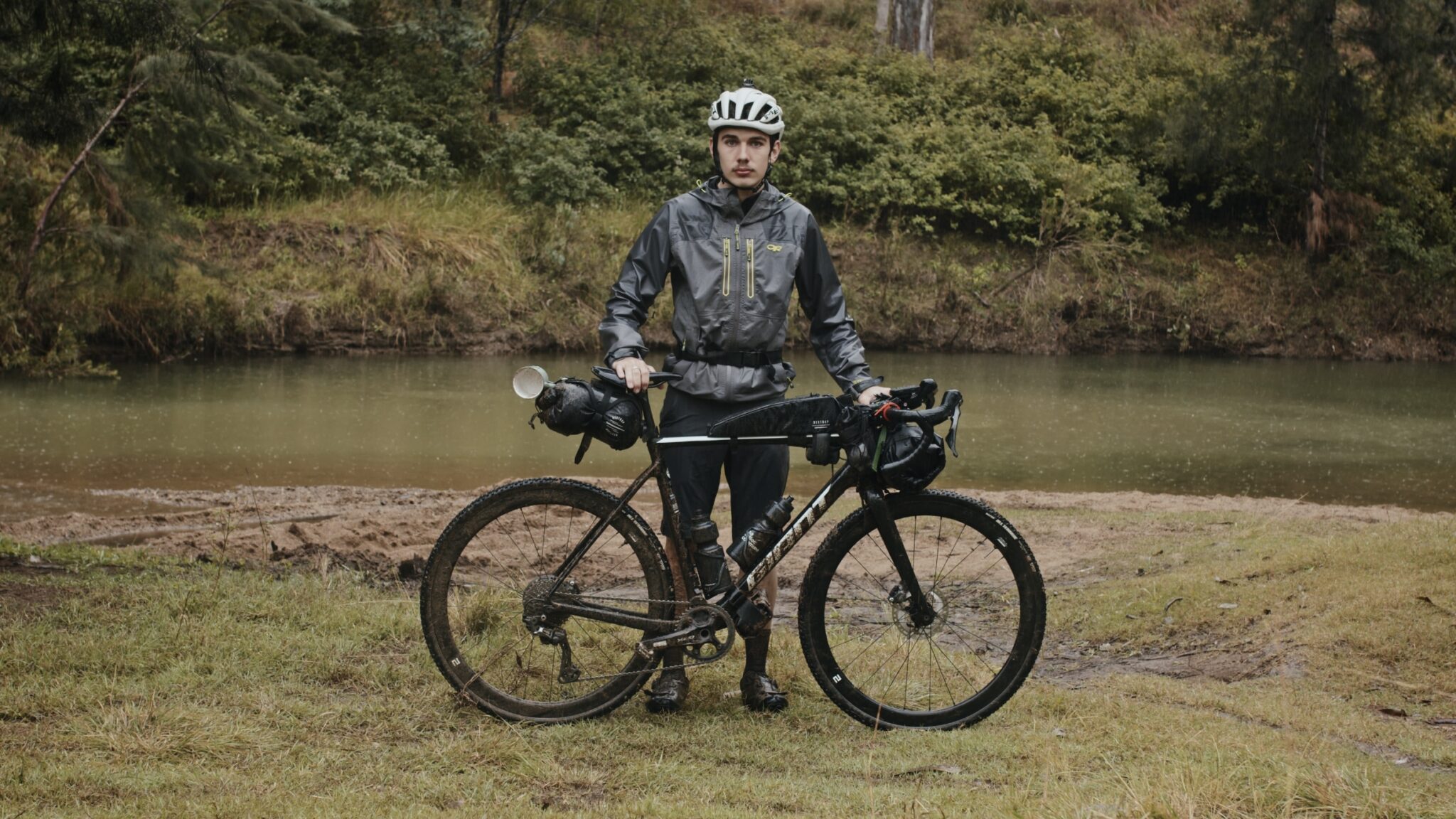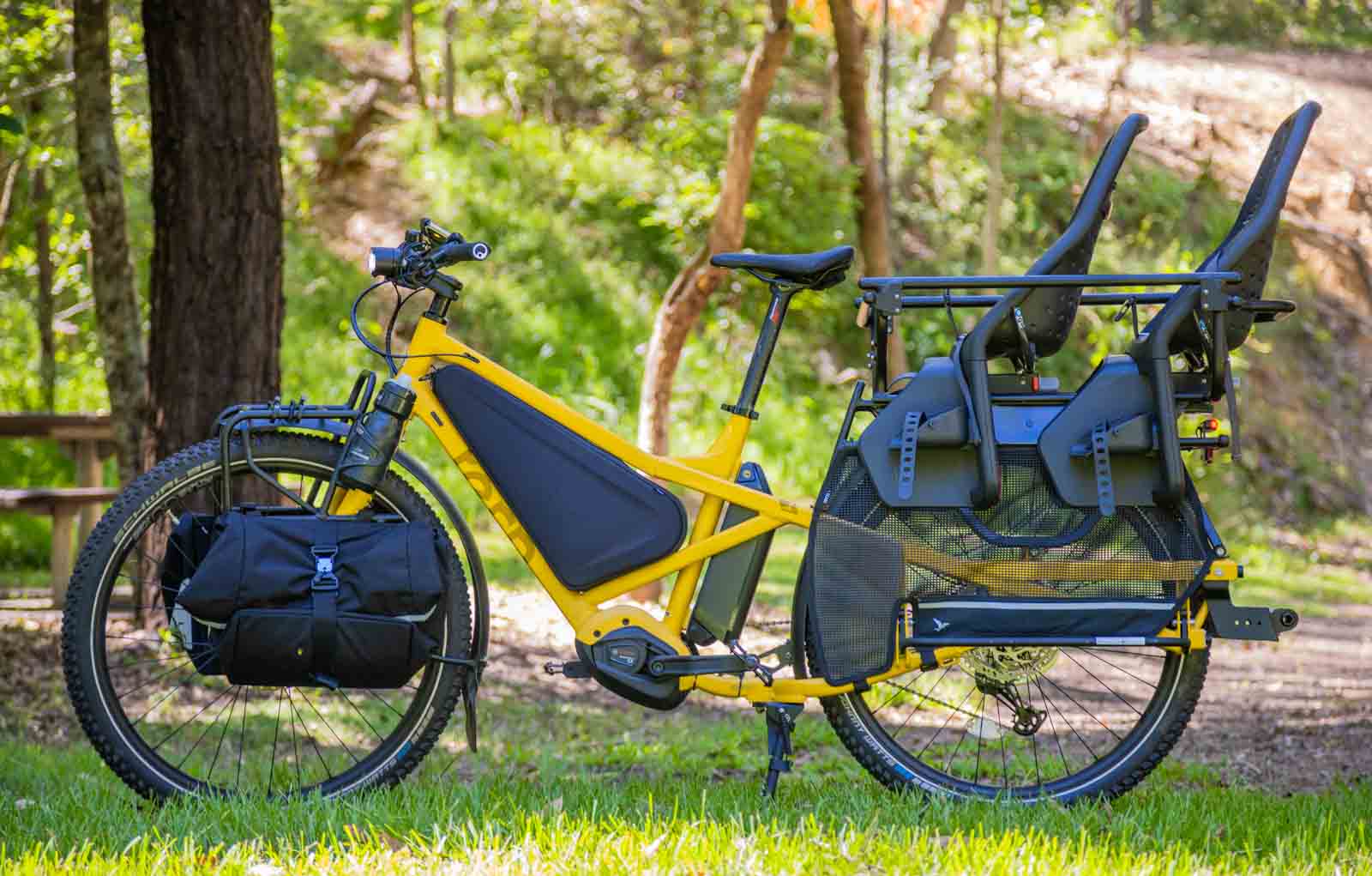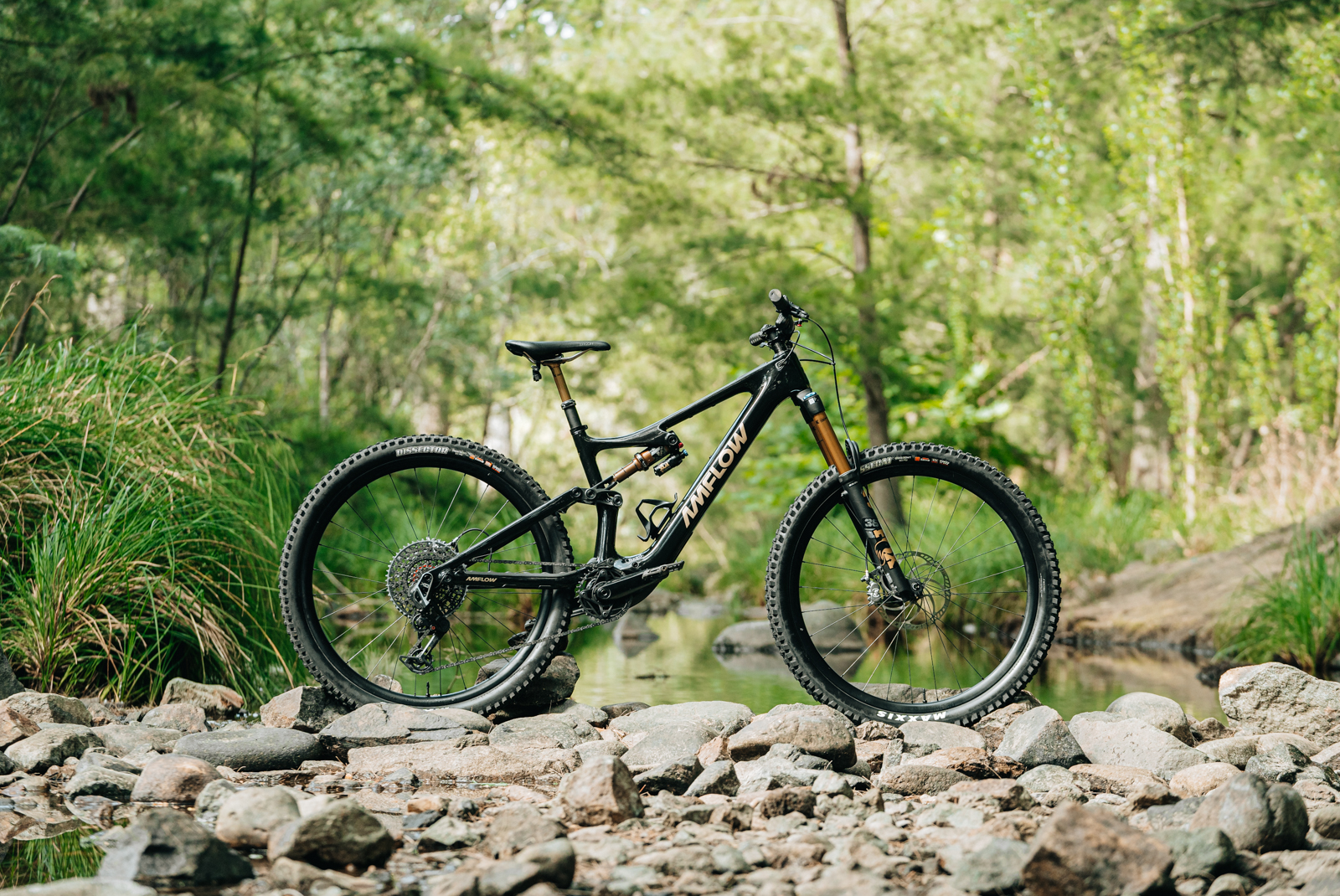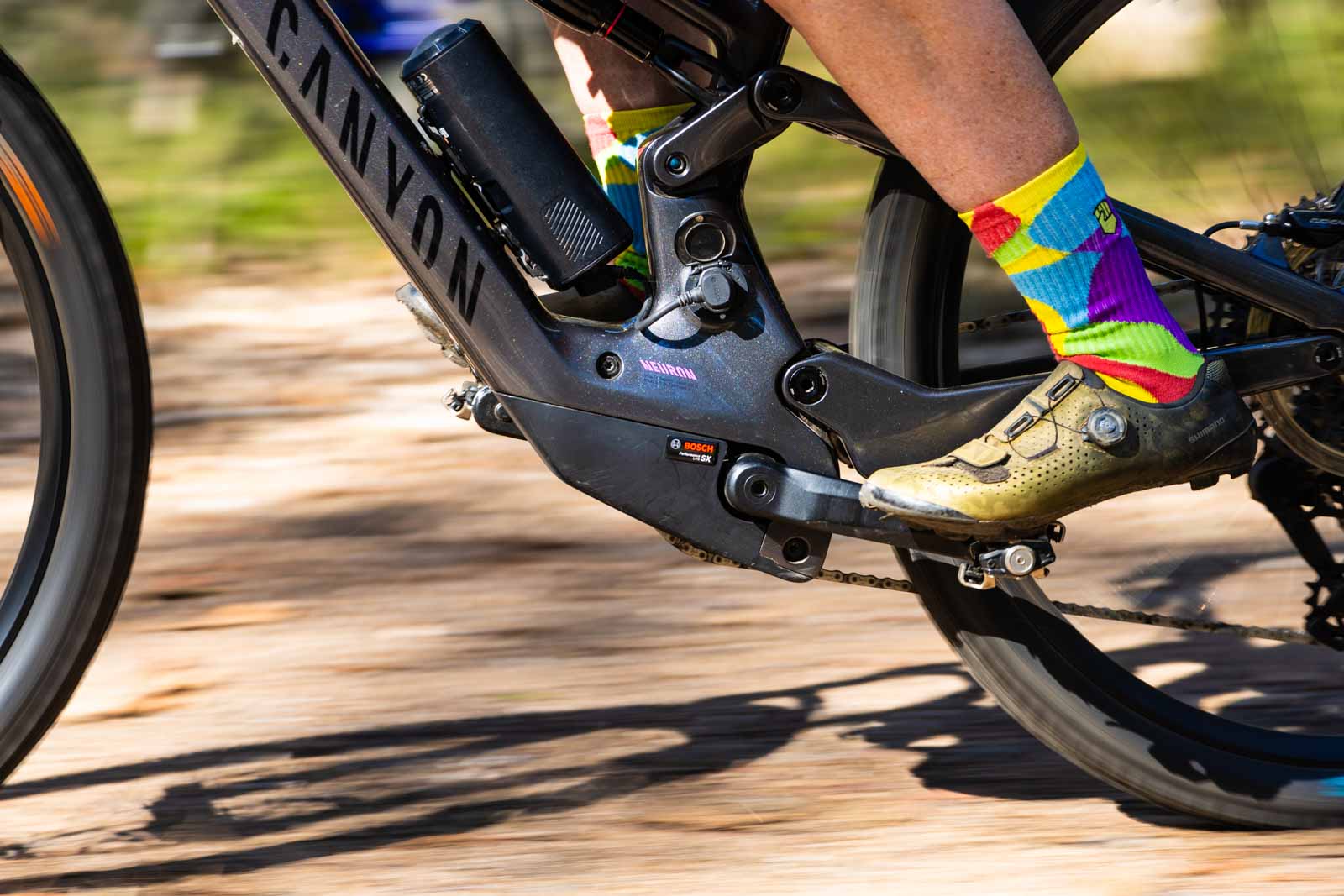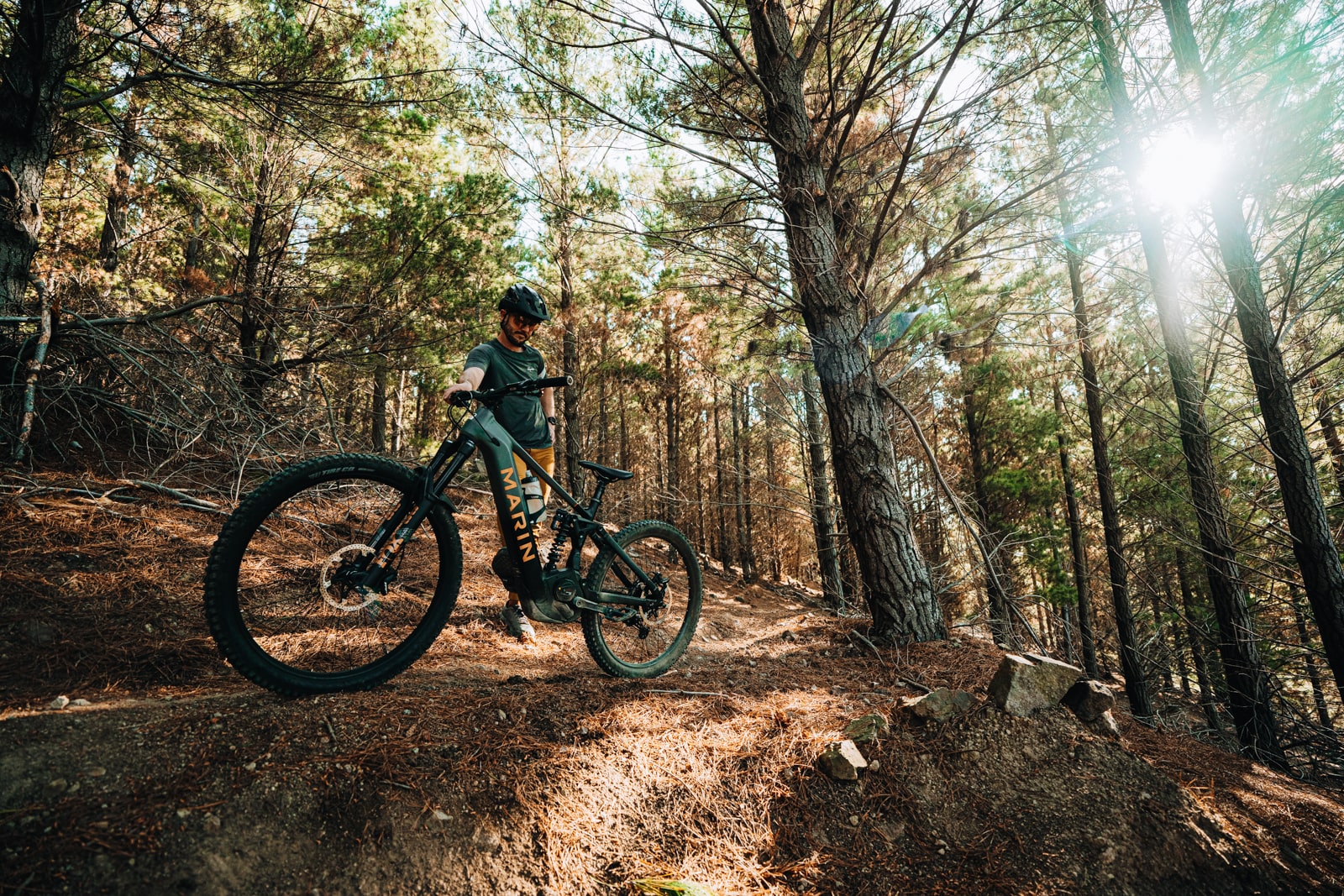TESTED: Pedal Bikes Titan II $3499 e-bike
Just how good can an eMTB that costs $3500 be? We tested the Pedal Bikes Titan II to find out.
Pedal Bikes are a smaller brand in the Australian market, but one moving ahead in leaps and bounds thanks to the thorough range of entry level bikes and e-bikes available exclusively via 99 Bikes. The Pedal Titan was their first foray into the world of full-suspension eMTBs, and they have just released the second iteration of the popular entry level eMTB, bringing some useful updates while maintaining an excellent price of $3499 for Club 99 members.
Pedal bikes have a range of other e-bikes from commuters to hardtails, but the Titan II is the only full-suspension bike in the range, and one clearly designed for off-road use. That said, Pedal Bikes aren't pitching the Titan II as a bike to go up against a Norco Sight VLT or Merida eOneSixty – it is designed to meet the needs of riders who want a full-suspension eMTB for moderate trails and light trail use, not hard-hitting trail and all-mountain action. There aren't many other options to look at under $4000, save for the Reid Sphinx FS which sells for $3799.99, which uses the same Ananda M100 motor but has some notable differences in spec and size options.
Photographer: Gerard Lagana
Tester: Mike Blewitt
Riding Experience: Enough to wear the boss pants.
Generally Rides: Factor Lando XC, Trek Fuel EX
Height: 178cm
Weight: 72kg
Bike Test Track: Iron Bark, Gap Creek, Samford trails
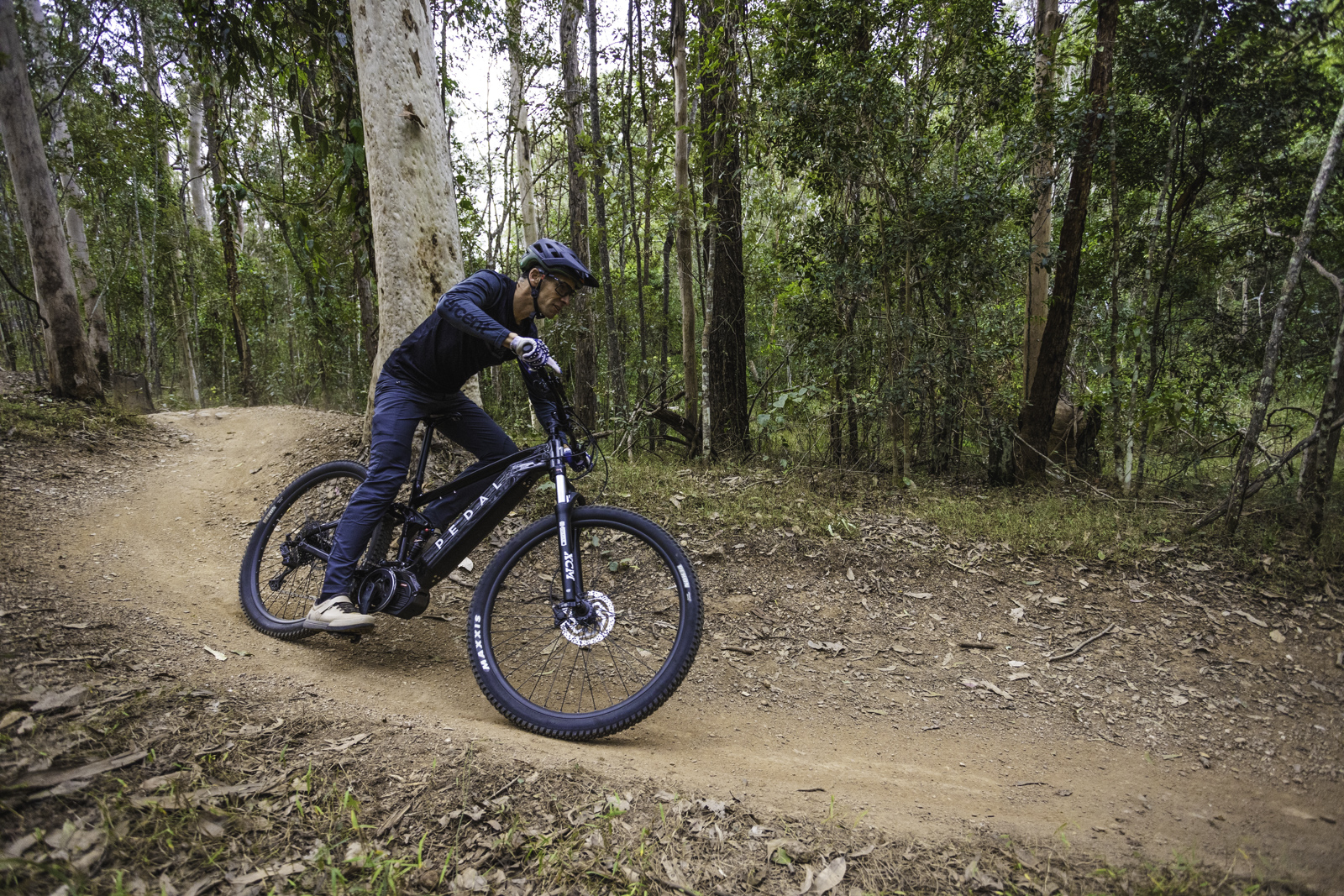
Initial Impressions
I picked up the Pedal Titan II from 99 Bikes HQ in Brisbane, it was a sample ahead of the full production run and I was lucky that 99 Bikes were able to supply the bike from the Pedal Bikes team. Having worked on our 8-bike Budget Bike Group Test earlier this year, it did help shape the approach to this bike. Any bike that hits a value mark can be done in a couple of ways. One is to really cut back on production quality and wow potential purchasers with a fancy derailleur, the other is to focus on the core needs of the intended purpose and build a bike that is reliable, providing value over a long time period. The latter is what Pedal Bikes have worked towards with the Titan II.
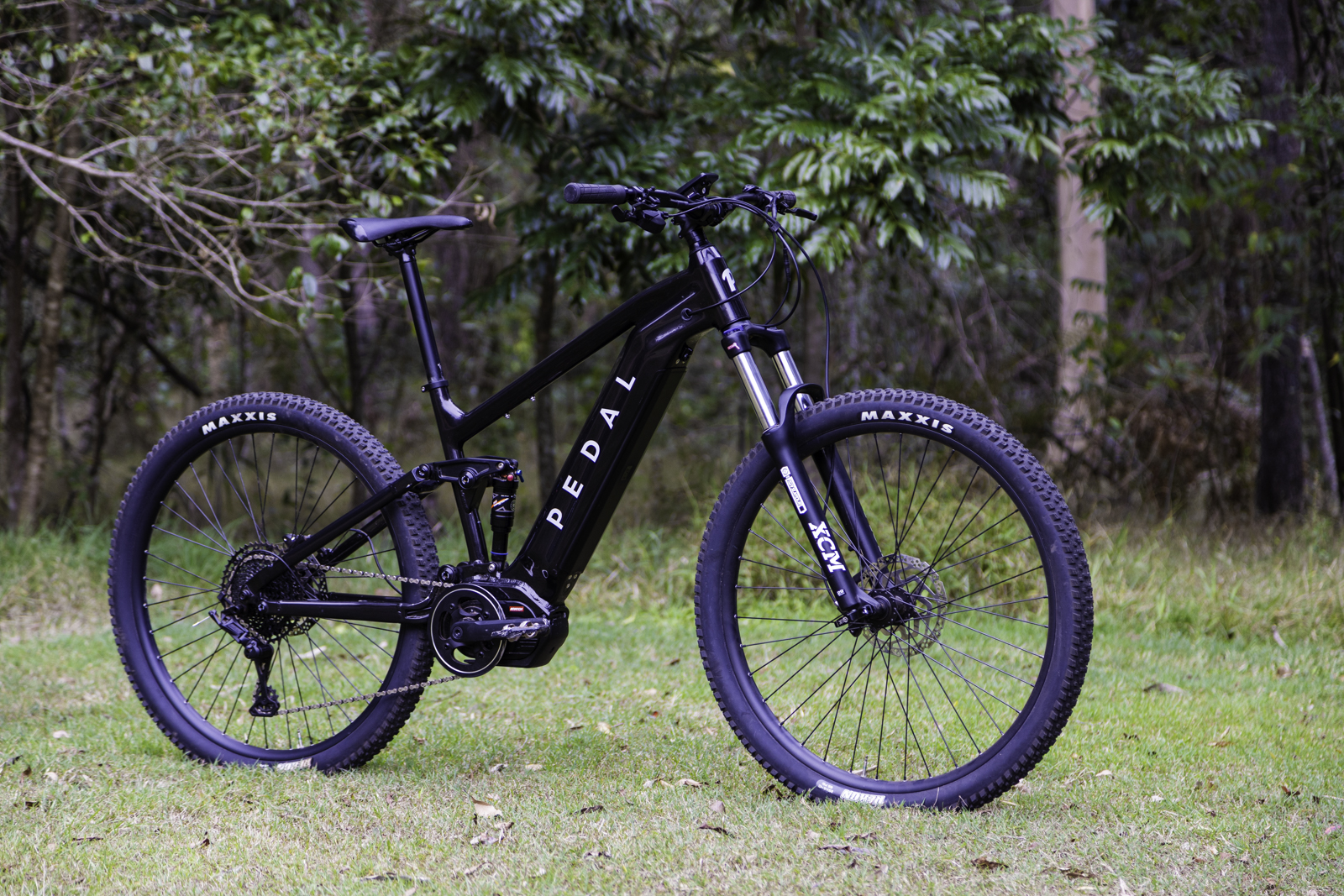
'For Titan II we aimed to have a bike that would suit a variety of riders. We wanted a central rider position and modern mountain bike geometry to encourage riders to find confidence while finding their flow off road on any number of the new generation of mountain bike trails being constructed around Australia. But we also wanted Titan II to be a bike that allowed riders to be comfortable enough to feel like they had an epic rail-trail rubble insulator or even a dual-purpose super-commuter,' said Tom Sterling of Pedal Bikes.
The bike is a smart looking bike, with a very familiar frame layout for an eMTB as it uses a mid-drive Ananda M100 motor and a 540Wh battery at the down tube. Some entry level e-bikes will use a hub-drive and external battery, but mid-drive really is the expected norm for balance on the bike, keeping the extra weight low in the frame to maintain how the bike handles.
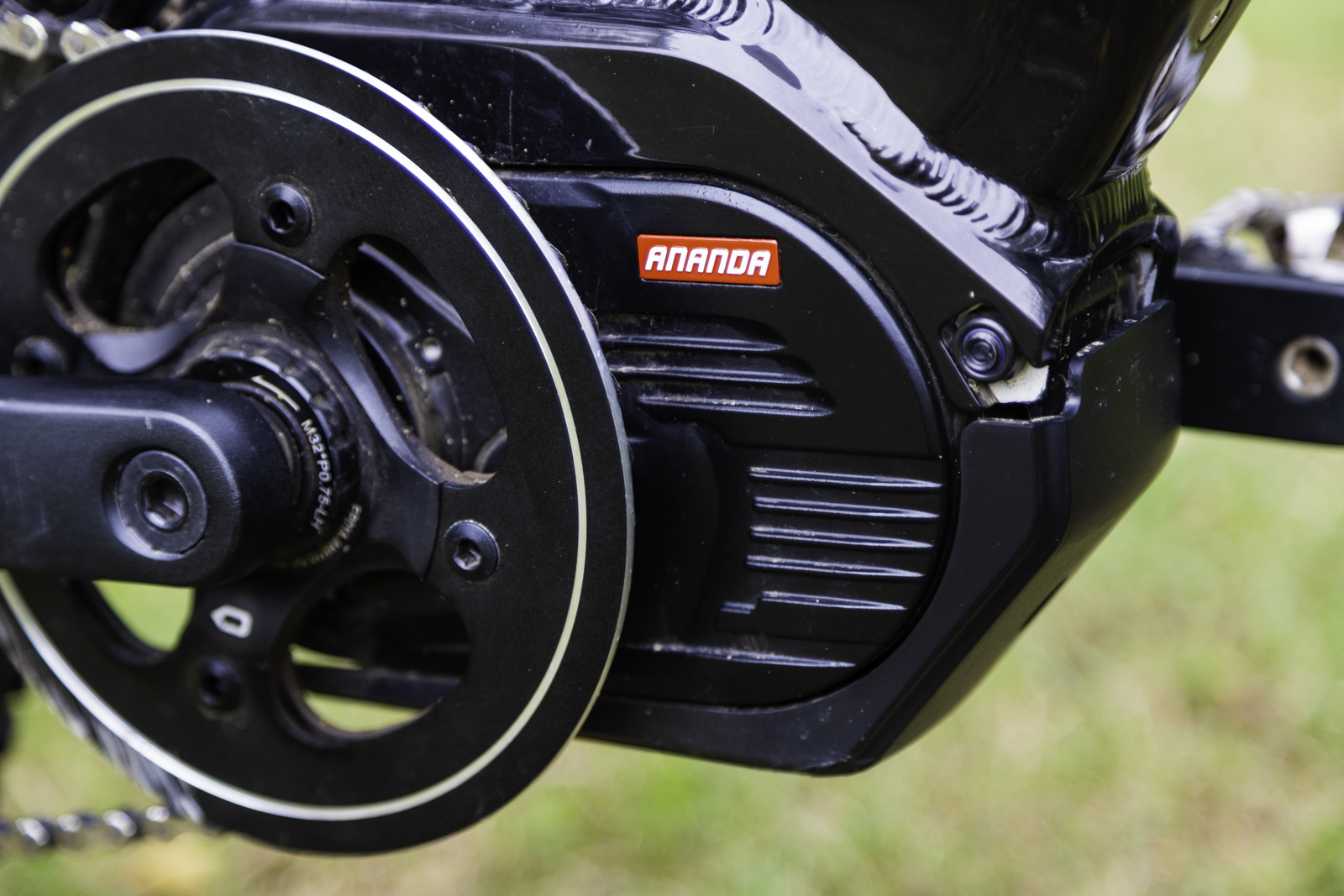
There is a reason World Cup downhillers are putting weights near their bottom brackets – it helps stability! The geometry is spot on for a modern trail bike, with a 65.5 degree head angle and 76 degree seat angle. On the large test bike reach is a little over 480mm, and medium and XL sizes are also available. The chain stays are a long 476mm, given the Ananda motor is a little bigger than some of the top end support systems. But that aids stability and climbing traction, which both suit the purpose of the Titan II.
To deliver on Pedal's goals of delivering a bike to suit a wide variety of riders, they designed the frame around 127mm of travel through a 4-bar linkage. It's active, it works, and the air shock allows adjustment for spring rate, while also offering rebound adjustment and lockout. The fork is a Suntour XCM 34 with 130mm of coil sprung travel and Boost spacing. This is a similar fork to what was on a few of the budget hardtails we tested in early 2023, however Pedal opted for the Extra Firm spring as stock. This means the fork is sprung to handle the weight of the bike (27kg) without diving into its travel. But according to Sterling, they made a few more upgrades over the original Titan as well.
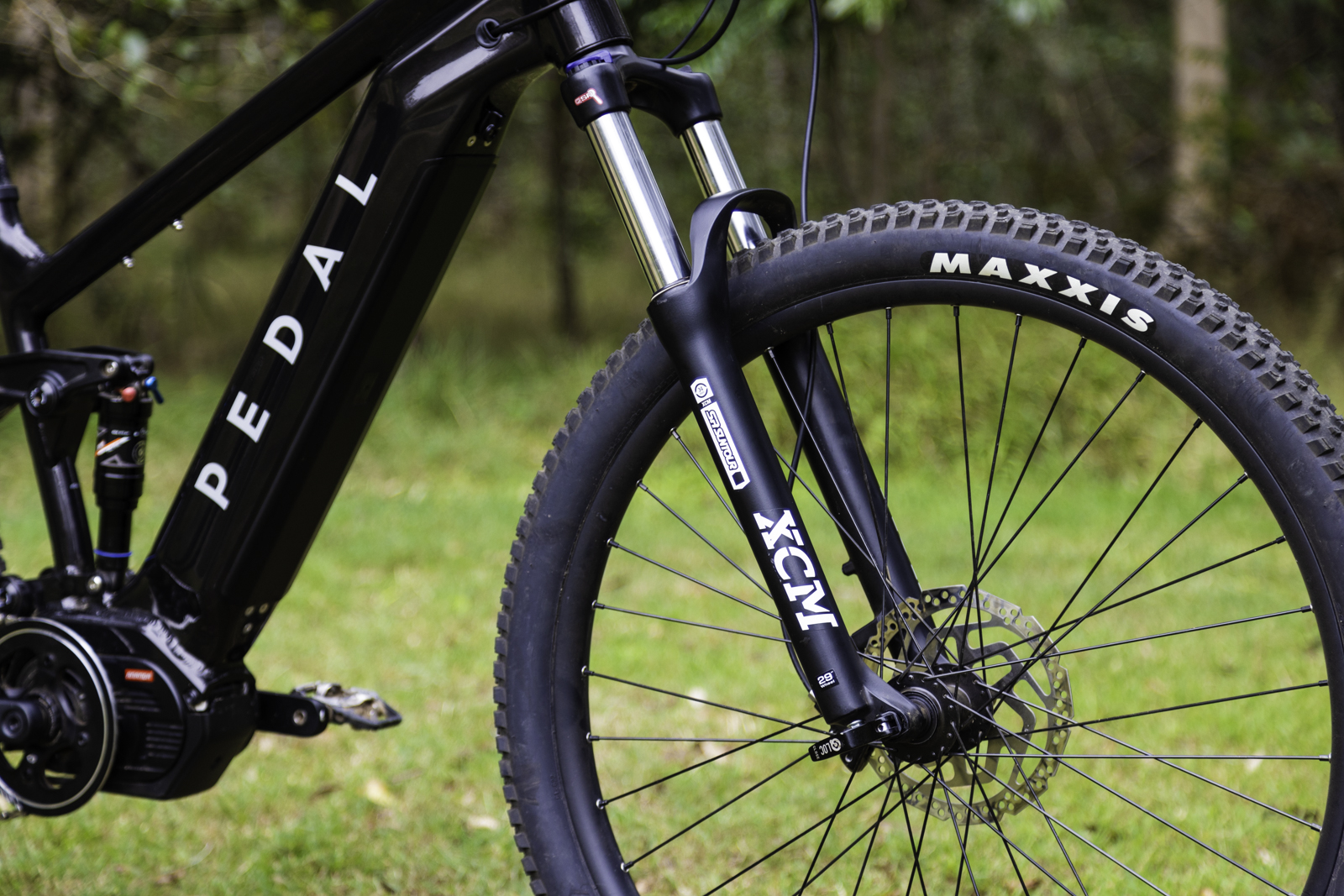
'The number one thing we wanted to address with this second generation Titan was the dropper post compatibility, so we made sure we had nearly full seat tube insertion on all our frame sizes to give upgraders maximum choice with dropper post length – plus it can be internally routed. From there we re-worked the rear end keeping a 4 bar design, conventional boost spacing, a standard post mount for the brake as well as a custom CNC rocker arm which connects to a standard metric eyelet shock. There's cartridge bearings in all the frame pivots and steel hardware to hold it all together.' All the pivot hardware is standard metric hex sizing with male-female bolts so it's very easy for a home mechanic to service as well. Kudos to Pedal for that!
You may not have heard of the Ananda M100 motor before, but it cranks out a whopping 110Nm of torque. There are 5 main settings plus a walk mode, with a mode selector that sits neatly at your left grip, and a colour screen above the stem.
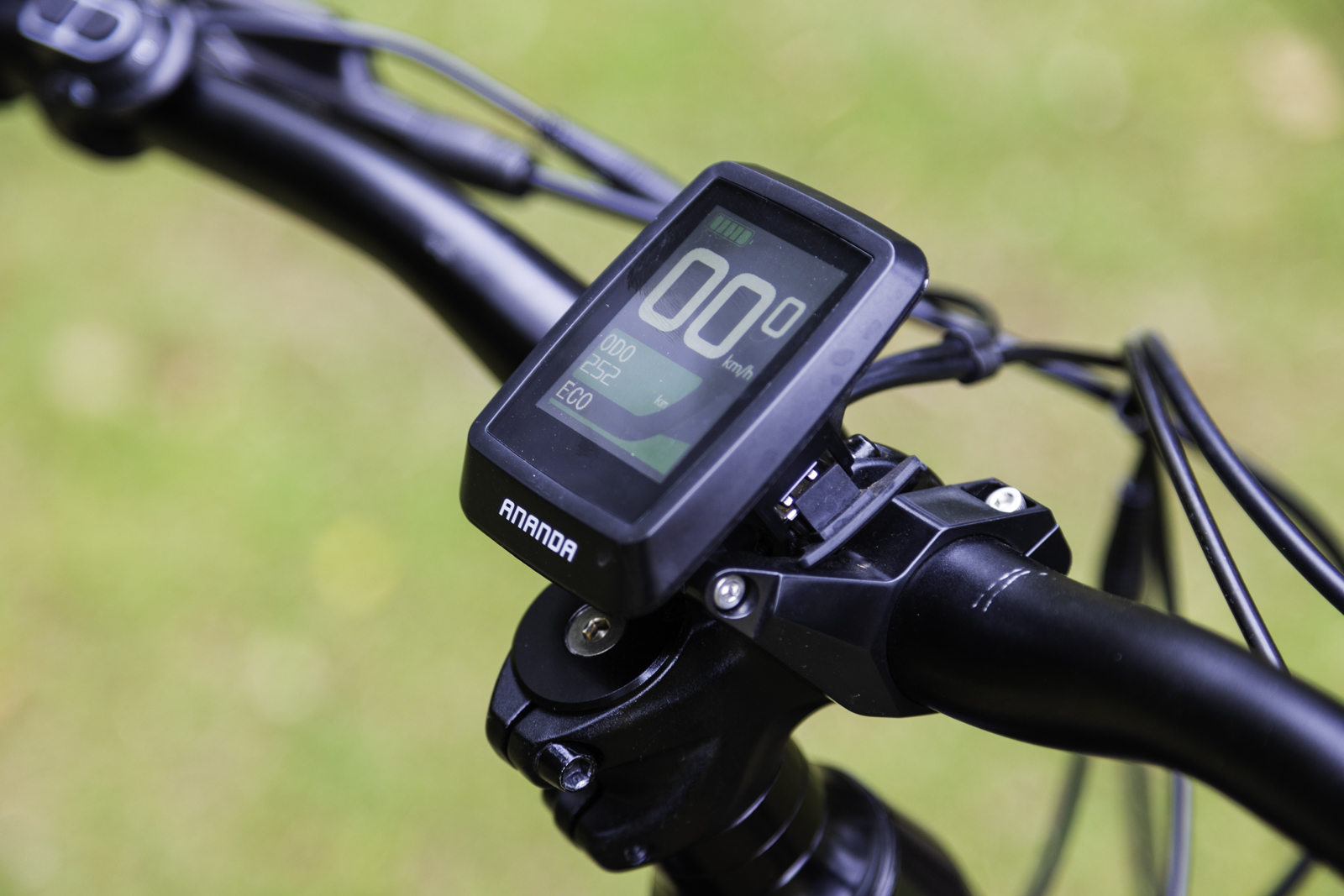
The motor is a little heavier than a Bosch Performance CX or Shimano STEPS, coming in at 3.5kg. Pedal have Shimano two-piston brakes to haul the bike in, with Maxxis Rekon wirebead tyres on 29mm internal alloy rims providing the traction. They rims are pinned and not welded so likely not tubeless ready – so I left tubes in for the test period.
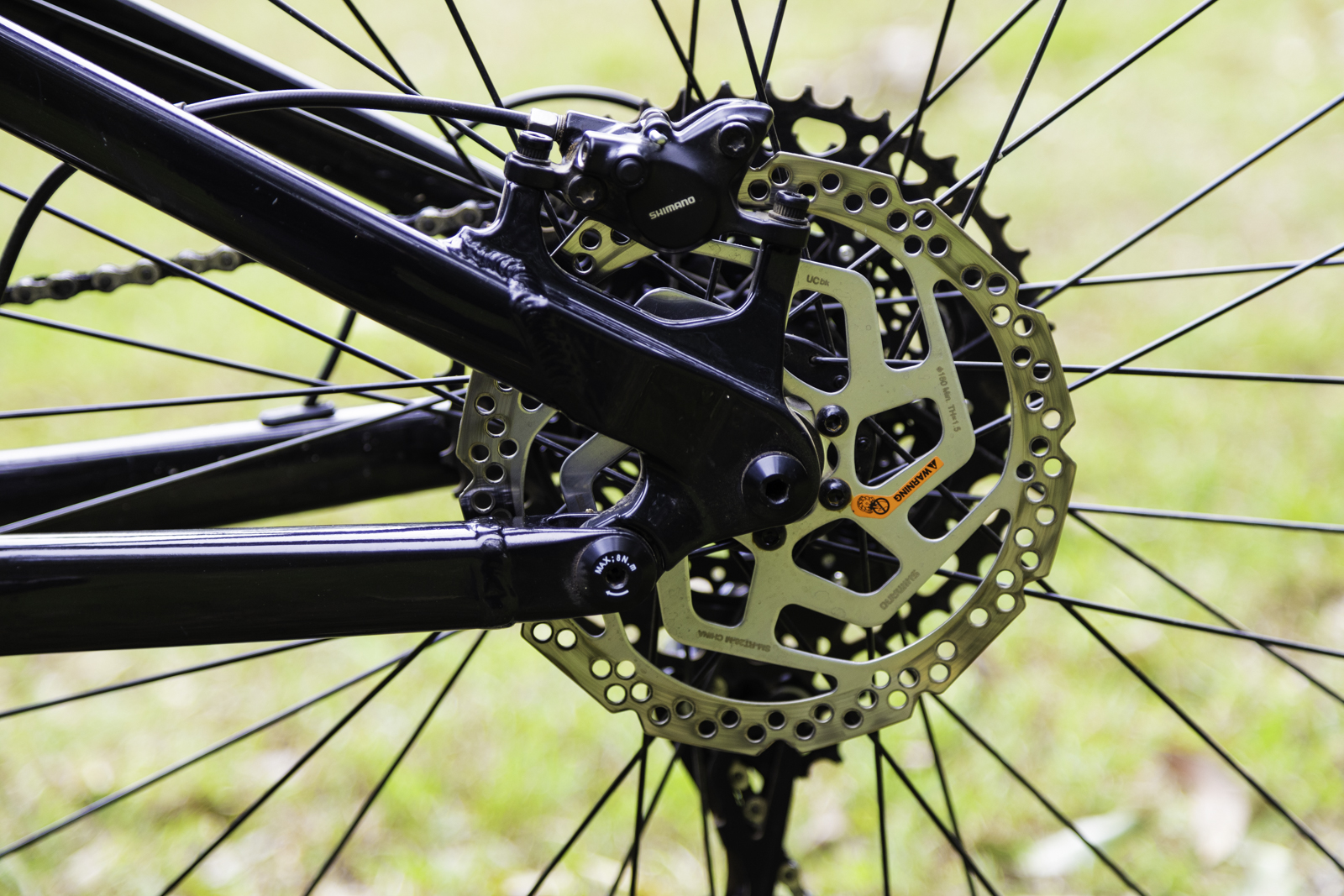
Pedal have done well using the MicroShift Advent X components to deliver a wide range (11-48) 10-speed gear range. The shifter has a fantastic lever feel and actuation, and the rear derailleur has a clutch for chain security. The bars, stem and saddle all have a comfortable shape, and there are even lock on grips included. AT 27.7kg this is one of the heaviest bikes I have tested for AMB, up there with the Norco Fluid VLT A1. I wanted to get it onto the trail before passing judgement, but the first impressions were positive.
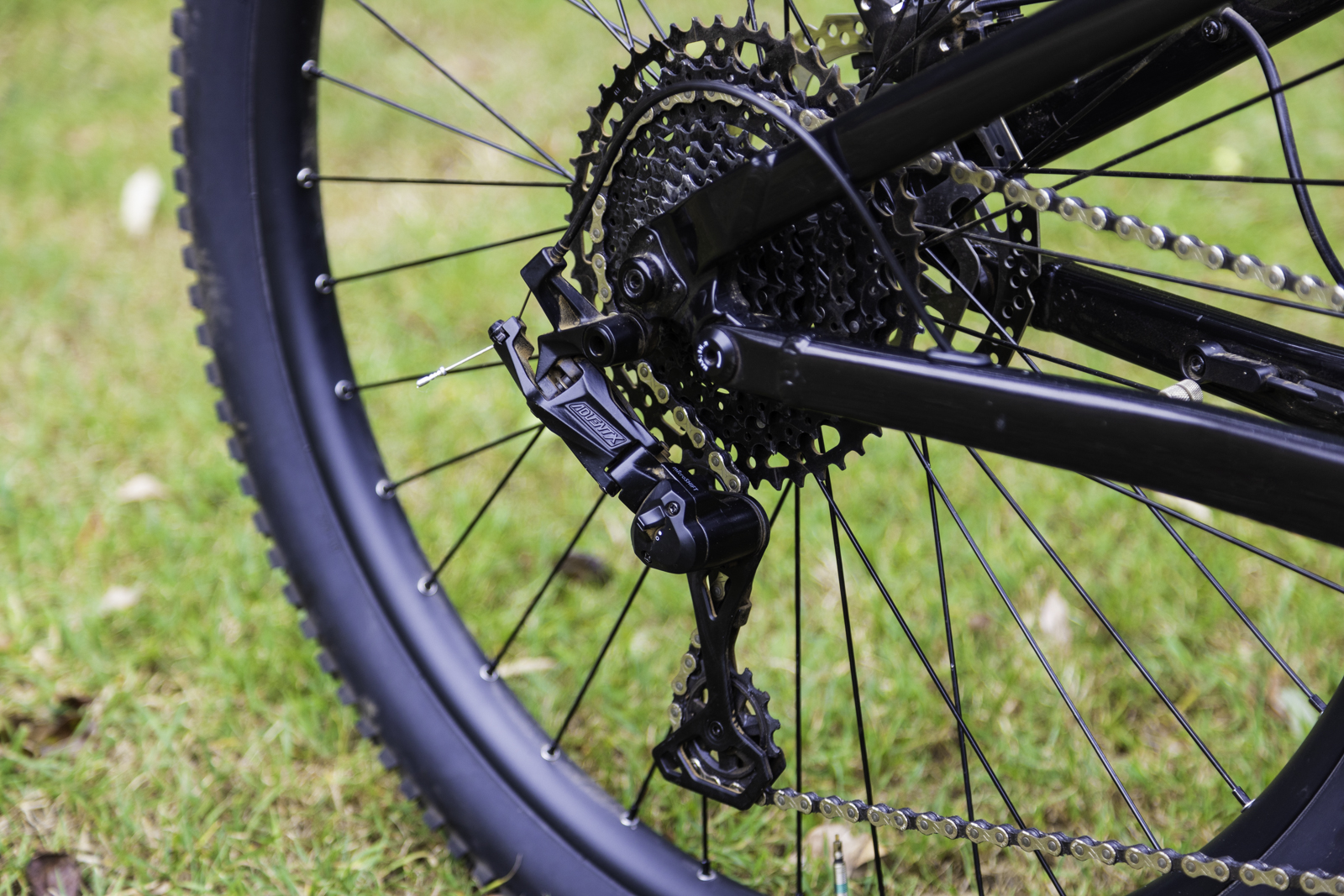
On The Trail
When we did our budget bike test in early 2023, one of the things we paid attention to was fit and ergonomics. Without a doubt, the design team at Pedal Bikes have done the same with with the Titan II. I found the fit and ergonomics to be spot on. Sure, the lever blades were a little longer than I would like, but the MT200 levers are a very common spec across a big range of mountain bikes, so this is nitpicking. I found the position on the bike to be well-balanced, sitting right between the wheels.
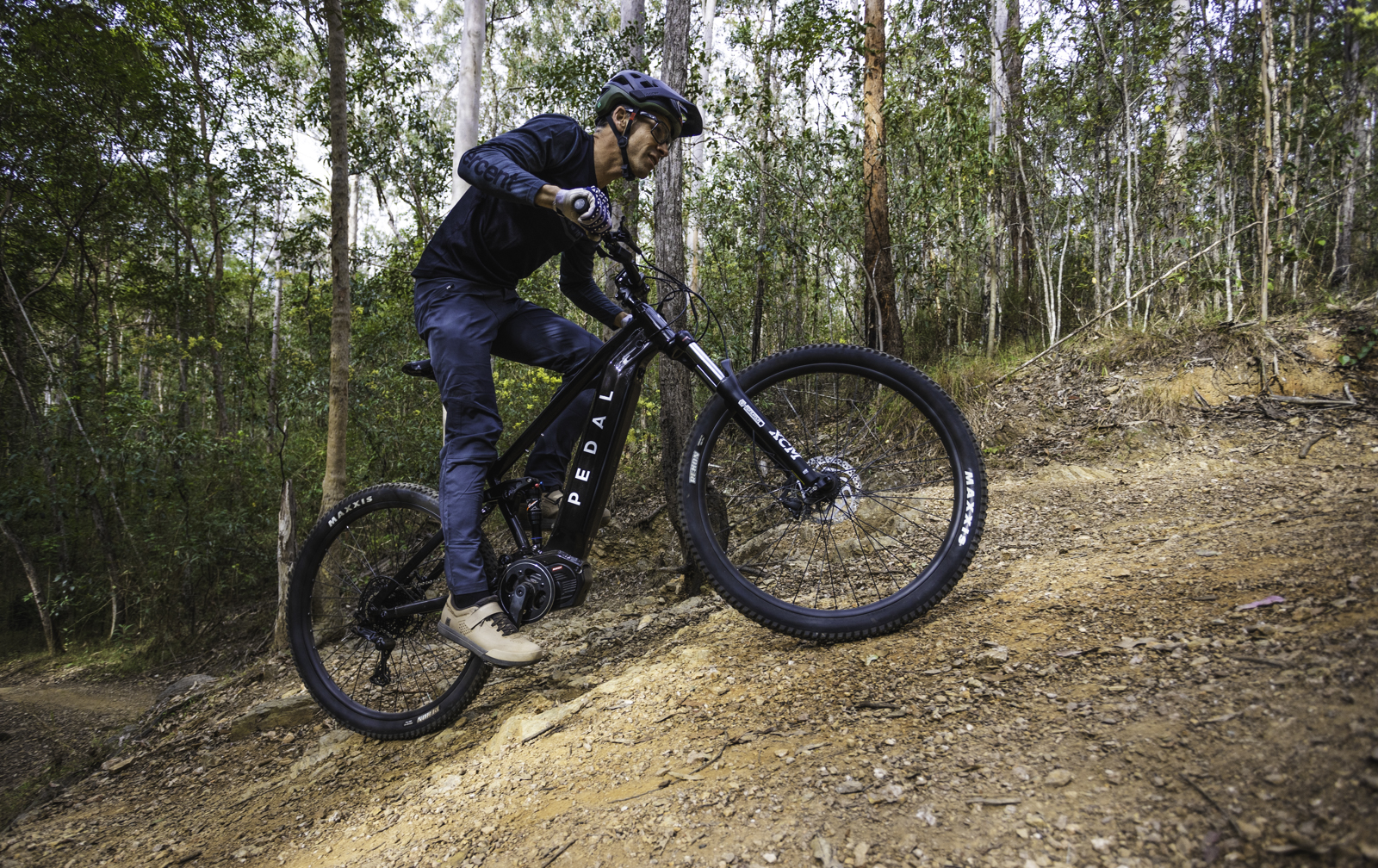
What I really wanted to know was how the Ananda motor worked on the trail. With a claimed 110Nm of torque it should be really punchy, but how would that actually translate? What I found was it performed in a different way to something like a Bosch Performance CX Smart System bike, which I consider to be a current class-leader in full-power eMTB systems – bearing in mind you would be hard-pressed to find this system on a bike under $8k! Systems like Bosch, Shimano and Brose/Specialized, TQ and others tend to reward higher cadences with more support, as opposed to higher torque giving you more torque. This is based around the sensors, with cadence and torque sensors being programmed to deliver the right response depending on the mode being used. Programming what software delivers from sensor response deserves its own full feature. For the Ananda motor, it acts more like you may expect an eMTB to ride if you haven't ridden one before. While the motor gets a whir going with the support being applied as you pedal, it does taper off at higher cadences (around 110rpm), but shifting to a higher gear will net a boost in torque and assistance. It's a tonne of fun, grab a gear, spin it out, and grab another. This is a surefire way to burn up fire trails and on mellow trails where you can motor along upto the 25km/h assistance limit. I even found it was a reasonable taper off from there, but again not quite the same as a top tier system.
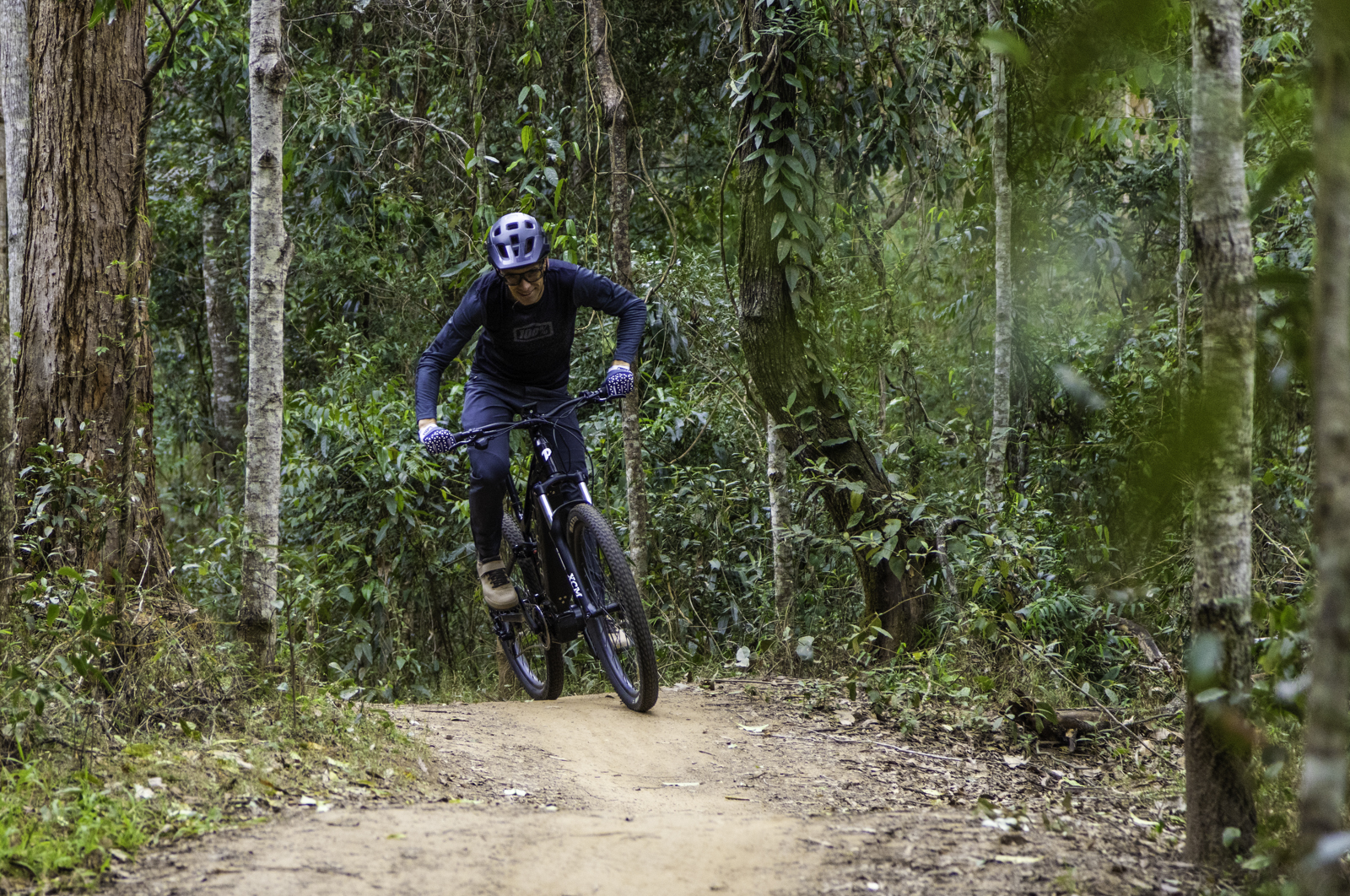
On the descents, the Titan II offered no major surprises. The handling of the bike is great, thanks to smart geometry and a nice shape to the wide handlebar. I did find the suspension was a bit limiting. The rear shock is basic but functional, and you can tune the air spring with a shock pump and of course get the rebound right. But I had trouble with the fork, in terms of performance. Realistically this isn't a major blot on the report for the Titan II, as there are very few choices for value forks on the market. I've had terrible experiences with forks like the RockShox 35 series on bikes worth twice as much as the Titan II, and the Suntour XCM 34 was chosen for the strength (steel 34mm legs) and the ability to have an extra firm spring as stock. At 72kg, I just couldn't get much use from the fork, getting about 70mm travel. That aided comfort and helped control, but not in the same way that a fork like a Marzocchi Z2, or Fox 34 Rhythm may. Here's the thing though, Pedal could spec those forks, but the bike price would be north of $4000.
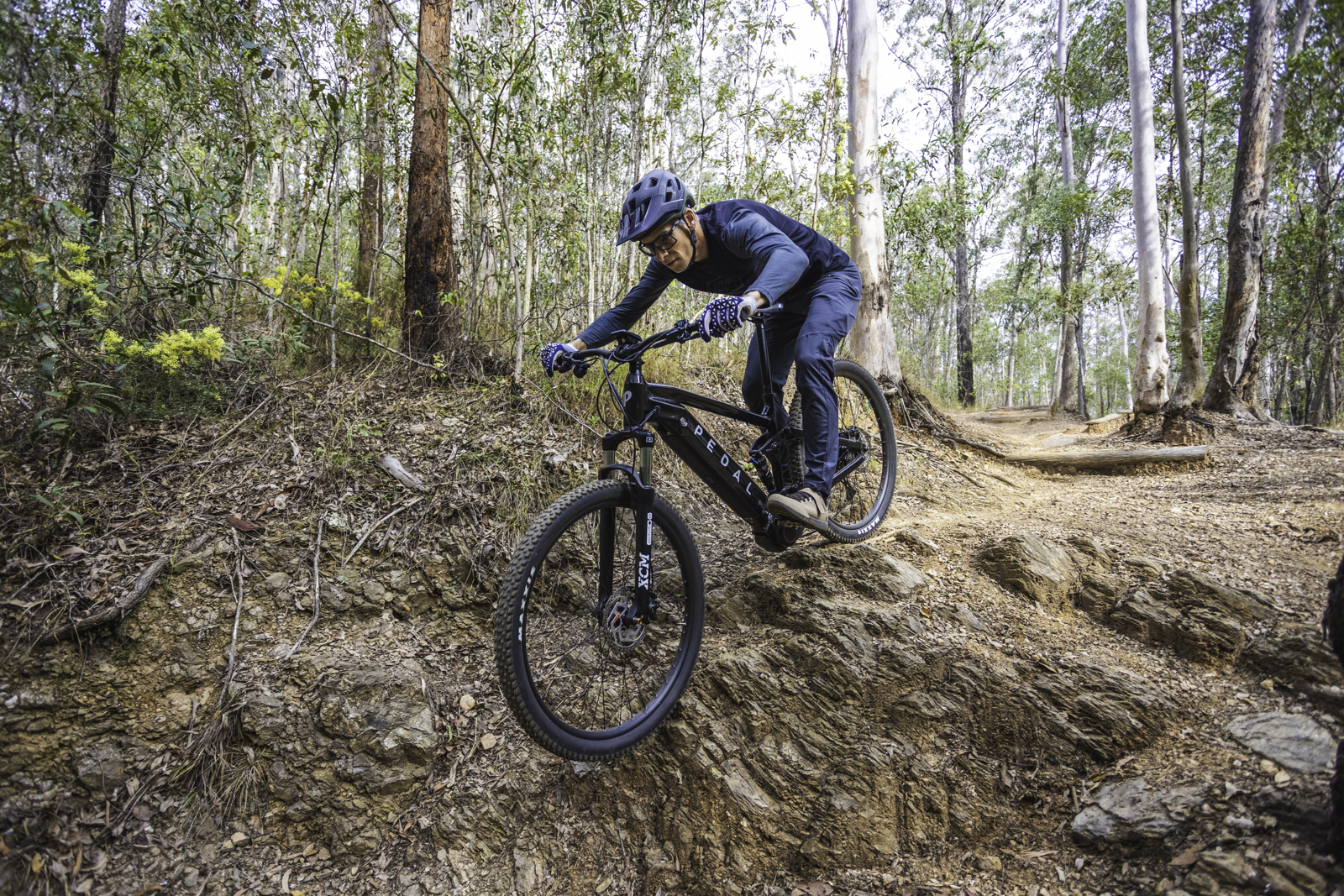
I found the fork to be more than adequate on flow trails with single hits, where it was less useful was repeated hits. For a Brisbane local, that meant I could ride flowing trails like Kombi and have a blast, but some of the longer rockier sections on Whipsnake meant I had to be pretty sure about my line and entry speed. But given the remit of the Pedal Titan II, I think that is fine. The reality is, I could still take the Titan II on some steeper trails, but I had to approach things a little slower. You could change this by getting a different spring if it is too firm for you – but if you're over 85-90kh you'll likely find it spot on. Add a dropper and potentially a tubeless ready set of tyres and rim strips and start pushing the capability of the Titan!
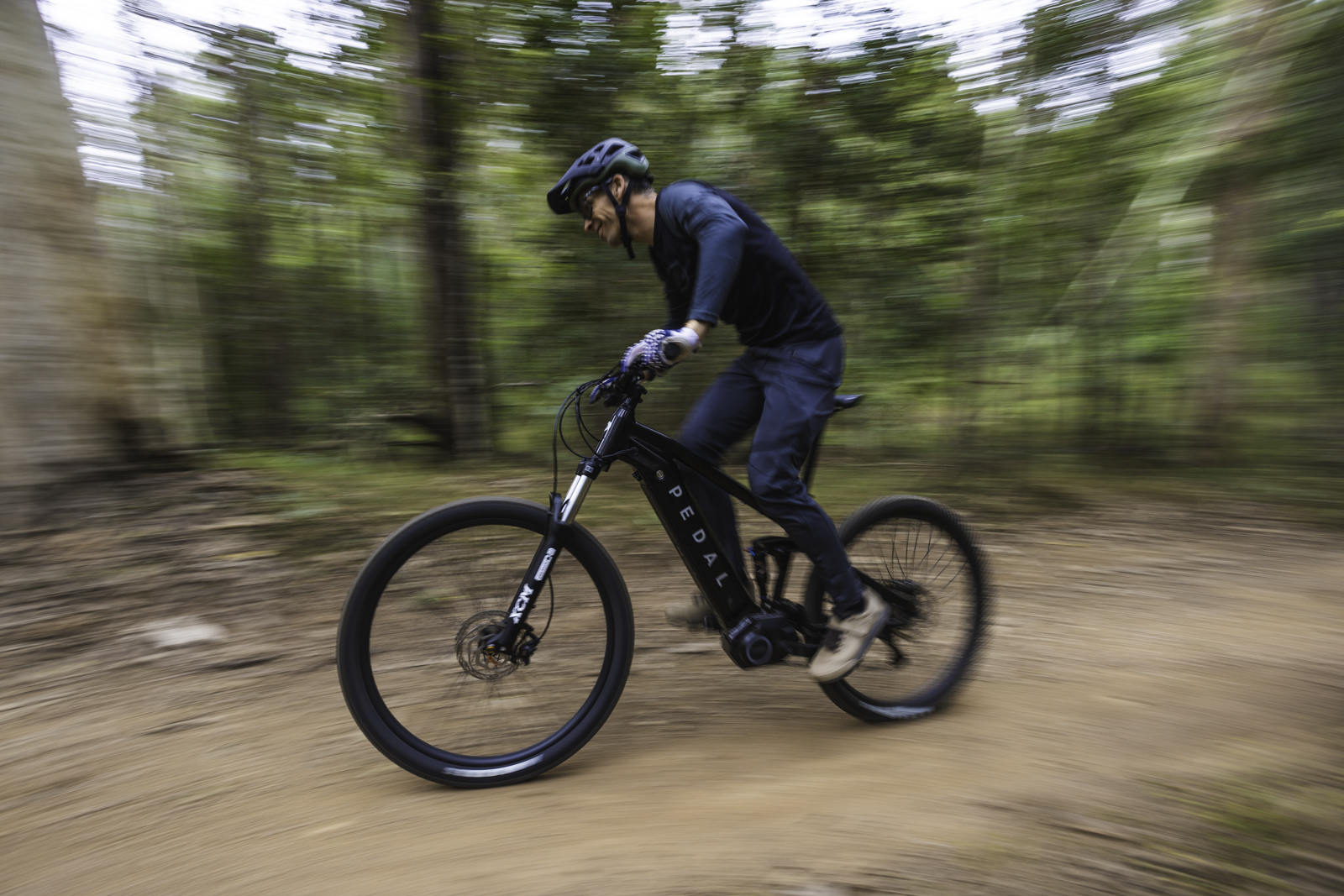
The torque-based response on the Ananda system and the overall weight of the Pedal Titan II meant that it was less at home on more demanding singletrack climbs than any of the high end eMTBs I have tested recently – and that should be no surprise. You really want a fast response from an eMTB system, for direct input for power moves up step ups and over logs on steep and tight terrain. This would be a long way from what the bike was designed for, and a reminder that the Titan II is aimed at getting more people on bikes.
During my time on the Pedal Titan II the drivetrain and brakes gave me no cause for concern. It may seem like a lot of bike to control with not much brake, but on the generally mellow trails of south east Queensland and within the design parameters of the bike, I had no issue. If you're after a brake system to run fall-line enduro trails then you're probably looking at the wrong bike.
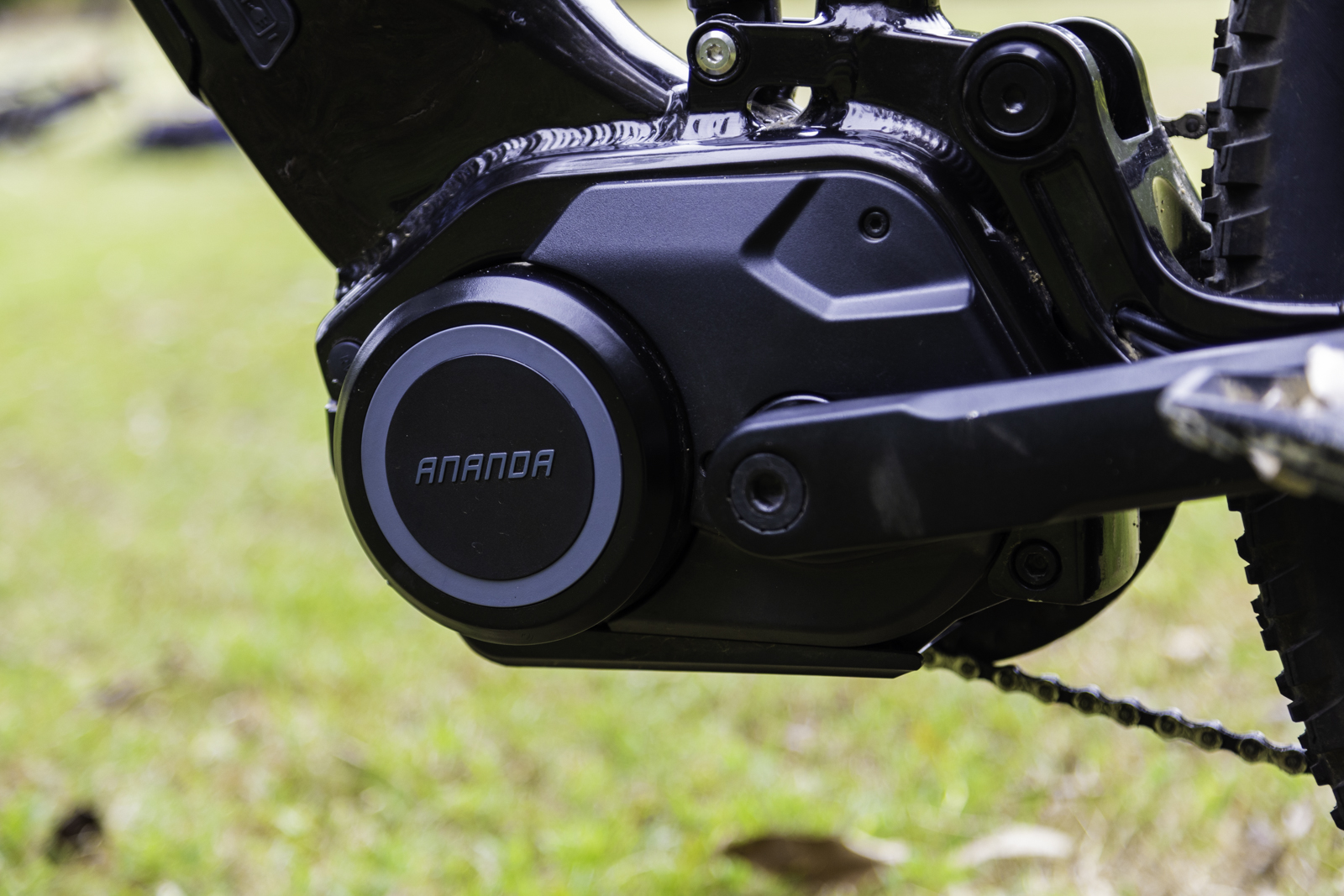
Our Take
Mountain biking is a fantastic way to enjoy the outdoors, but fitness has always been a hurdle to get the most out of it. In a way, shuttling and the rise and rise of eMTBs has reduced that barrier to entry, helping to get more people on the dirt with a smile on their face, without high end aerobic fitness being a prerequisite for enjoyment. In a way, what Pedal have done with the Titan II is to reduce the financial barrier of eMTBs, bringing a well-designed eMTB to market at a price that is exceptional value for what is offered. It is important to realise that Pedal Bikes aren't just pulling the the covers off 'The Great E-Bike Scam' where the bike industry is just charging us more for bikes.
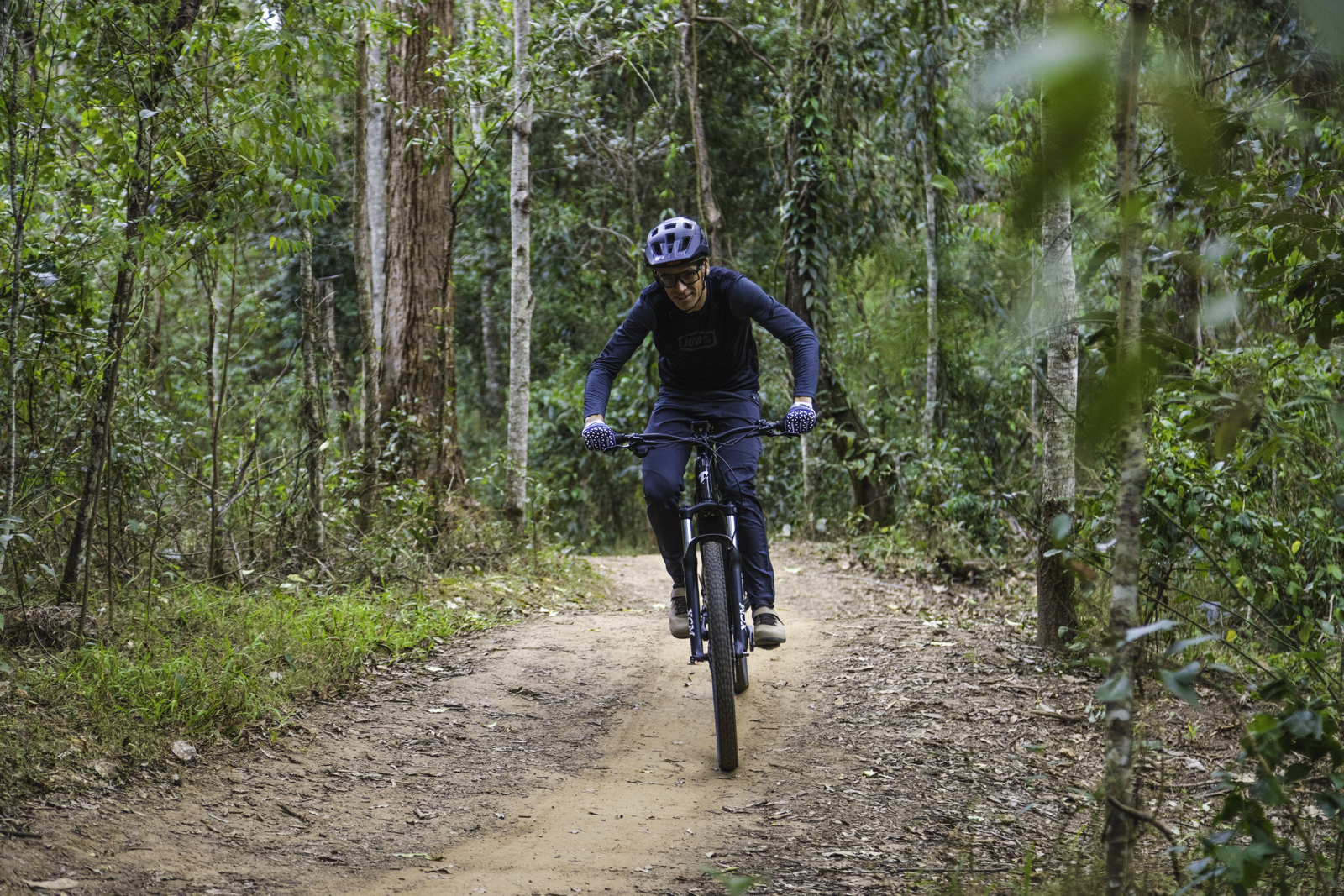
Top end eMTBs cost a lot due to the research and development that goes into the frame design, materials and support systems to make them quite exceptional to ride. What Pedal have done is design a bike with the key features needed; fit, ergonomics, support, reliability, gear range… without the bells and whistles. I don't believe this is the bike for someone to buy with major upgrades to fancy wheel sets, top-shelf suspension and a wireless drivetrain over time. The Ananda system won't have the response of a top-end eMTB for technical ascents, despite having excellent support. Where it fits is exactly what Pedal aimed for; a bike that is fun on local purpose built trails, flow trails, rail trails and general riding. It's a well-designed and built bike, and I think the Pedal Titan II will play a big role in getting more people on bikes, with a smile on their face.

Pedal Bikes Titan II parts list
99bikes.com.au
Available Sizes M, L (tested), XL
Frame Material Aluminium
Fork Suntour XCM 34 NLO, 130mm, Boost, Extra firm spring
Shock DNM AO38C 190x45mm, lockout, 127mm
Motor Ananda M100
Battery 540Wh
Head unit Ananda D16
Controller D10 remote
Shifter MicroShift Advent X, 10sp
Derailleur MicroShift Advent X eMTB, 10sp
Chain KMC E10, eMTB
Cassette MicroShift Advent X, 11-48t, 10sp
Hubs Shimano MT200, Boost
Rims Alloy, pinned, 29” 30mm internal
Tyres Maxxis Rekon 29 x 2.4” wirebead
Brakes Shimano MT200, 180/180mm
Stem Alloy, 45mm
Handlebars Alloy 25mm rise, 760mm wide
Seatpost Alloy, 30.9mm
Saddle MTB Sport, steel rails
